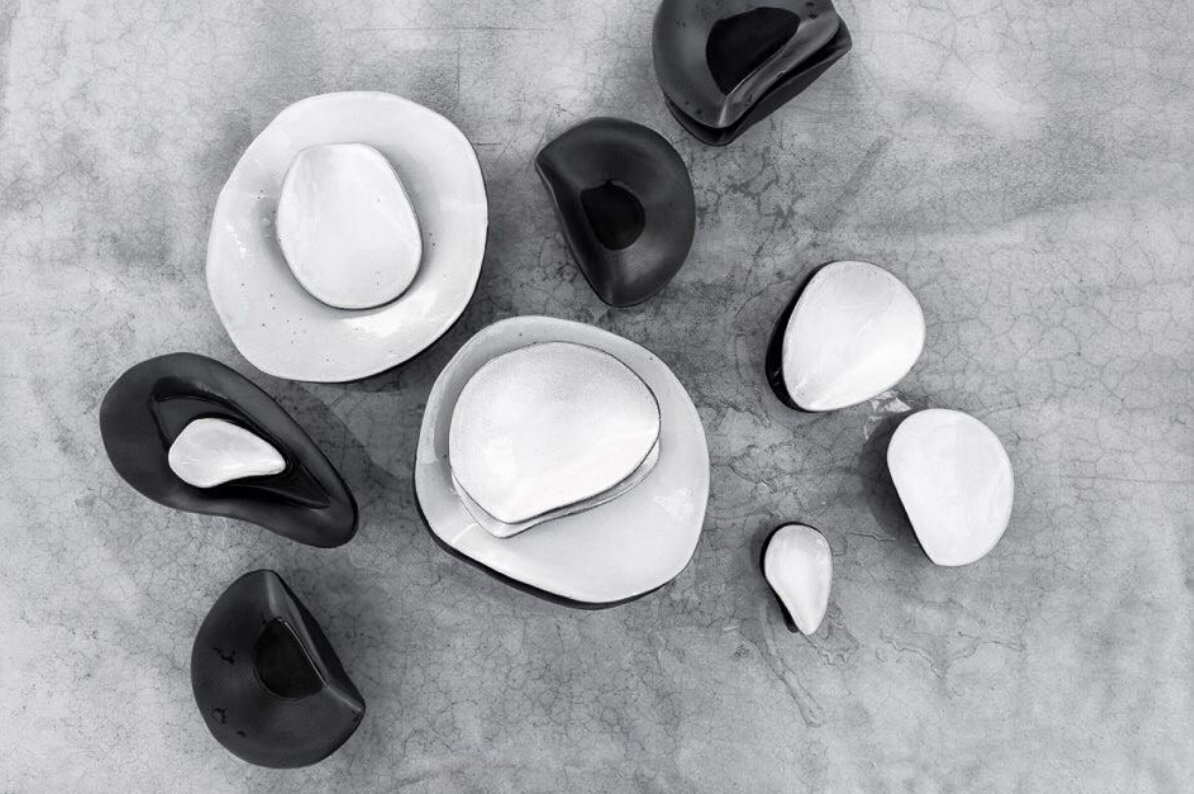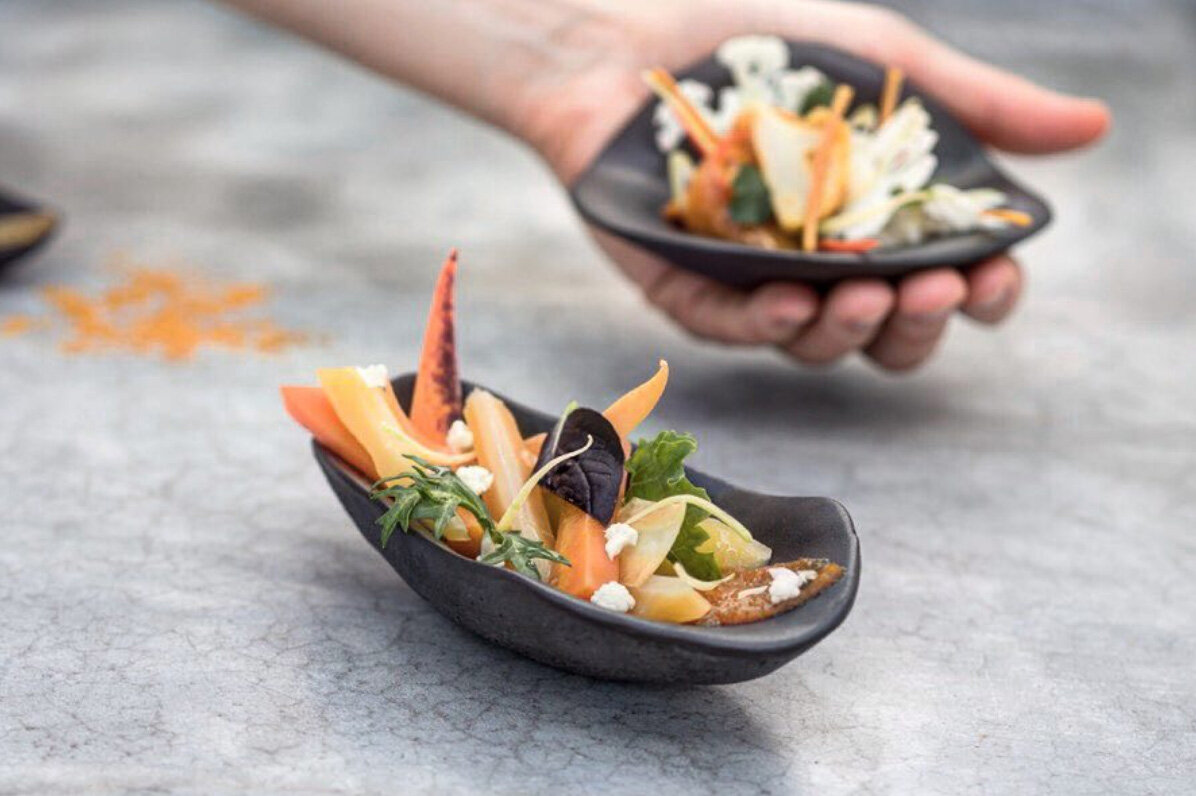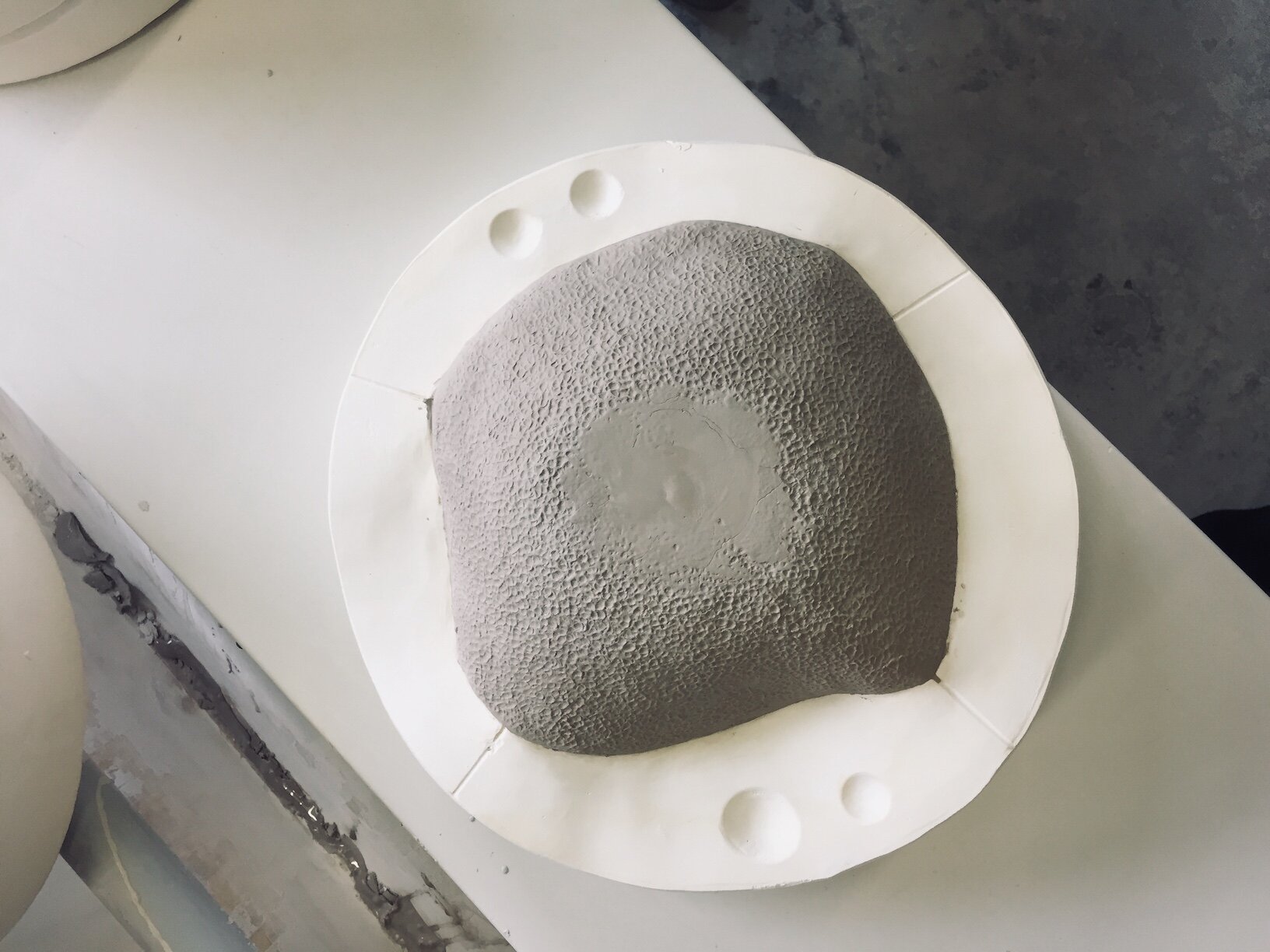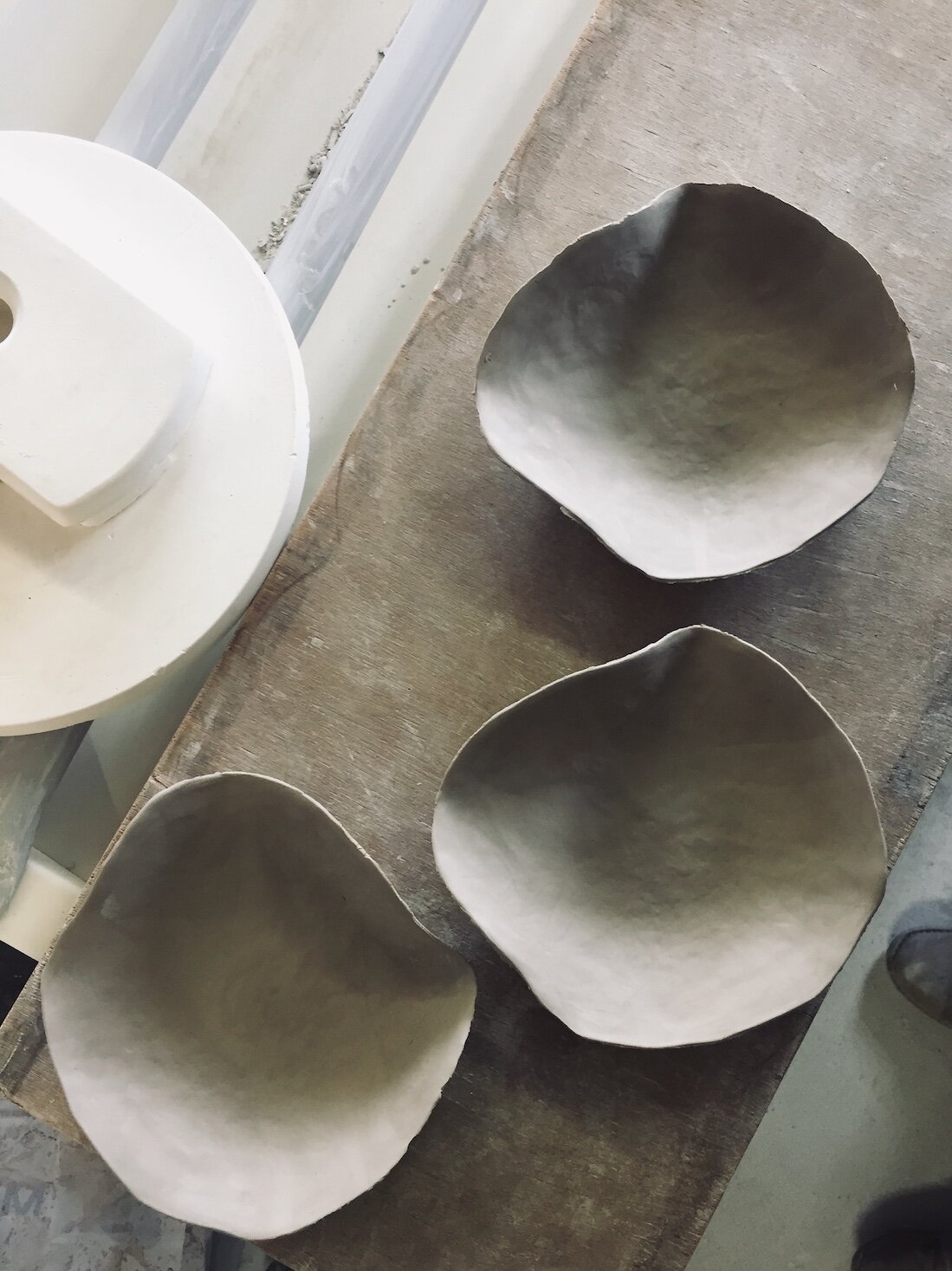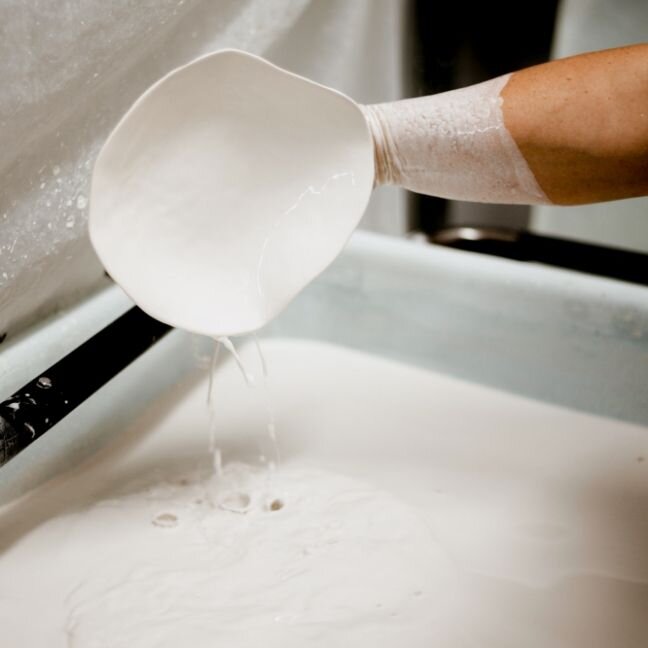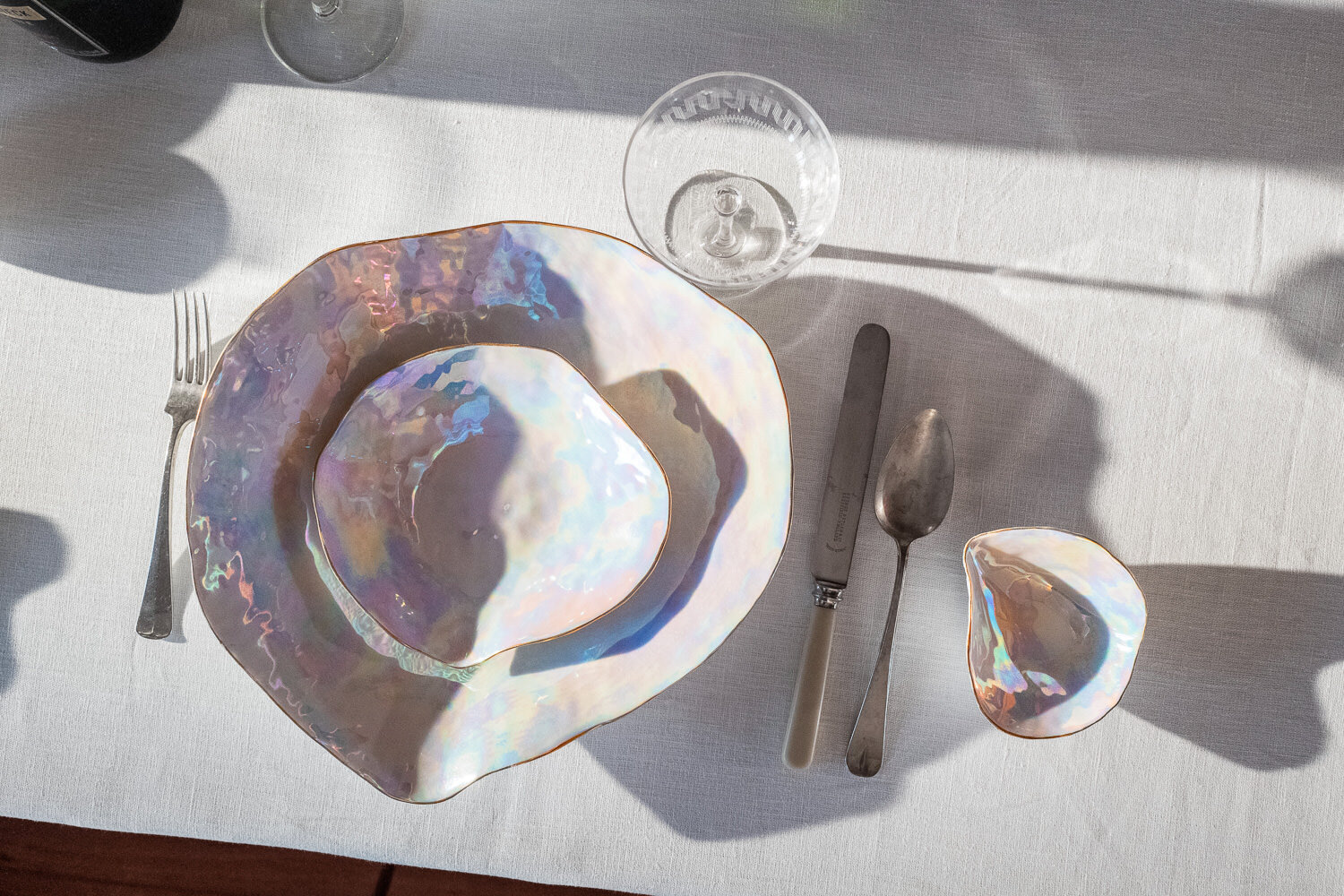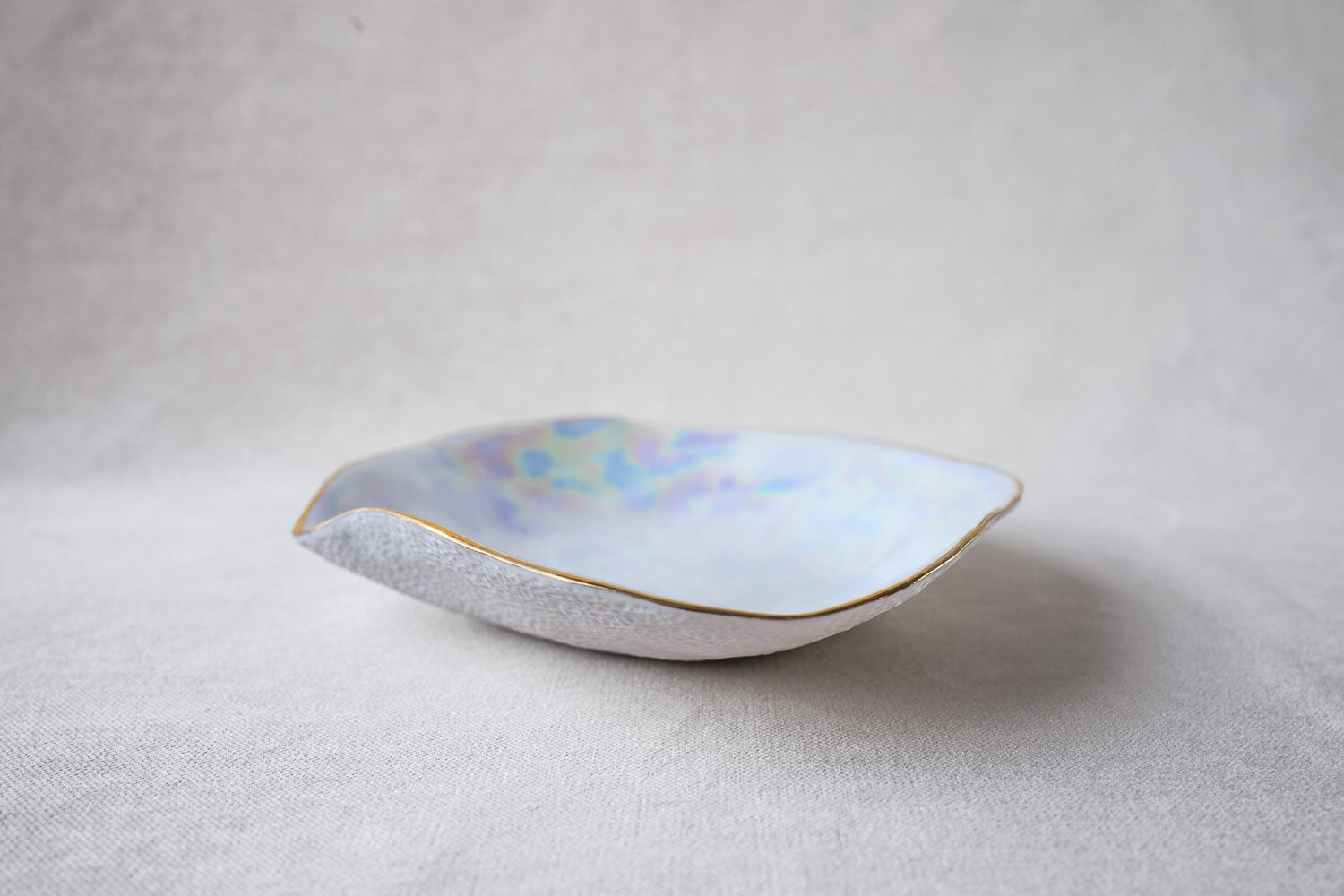The search for sensual imperfection – How it all started
After graduating from the Design Academy Eindhoven, I had a design overdose and was so happy to flee to Amsterdam for new adventures. My passion for the food system, for healthy & delicious food was getting stronger than my will to work at a fancy design studio. So I quit the job at the fancy design studio which I wasn’t enjoying at all, and started working in a restaurant while figuring out what to do next.
An organisation in Amsterdam curating exhibitions to showcase newly graduated talent approached me during that time. I was asked to create a project for their upcoming exhibition, the only requirement being that the title had to start with the first letter of my last name. The decision was easy: Food Fragility. I had just read The Omnivore’s Dilemma by Michael Pollan and I wanted to express the imbalances and the fragility of the food system. So, I created a series of handmade organically shaped spoons with stone and bronze.
(To understand more about my obsessions with the food system, read this article)
Crowdfunding
When Steinbeisser saw this project, they asked me to create 40 of those stone spoons for one of their local, vegan, organic, arty Michelin Starred dinners. How could I say no to that, this was a dream!
There was only one problem, there was no budget and I would only get paid if the spoons were sold at the dinner. Soapstone being a fragile material, and the hand carved spoons demanding a lot of work, this was not going to be enough. The idea of doing a crowdfunding campaign came up. That sounded like a terribly scary thing to do. Asking people for money, just like that.
I decided to go for it, but making the project a little bigger than just the stone spoons. I wanted to create a series of spoons or “eating tools” in ceramics, that would reconnect people with their food while being stronger, easier to use and to manufacture.
The crowdfunding was nerve-racking but worked out successfully, and I was able to start producing with a Dutch ceramic manufacturer.
That’s how my first collection, Evoke, was born.
Sensual eating tools
The sensual shapes of the Evoke collection were born out of this desire to re-connect people with their food, quite literally. Inspired by the way we taste an oyster, the shapes were designed to fit perfectly in your hand, to be picked up, licked and slurped from. In this way, more attention would be given to the moment of eating, the pleasure and the tasting experience would be enhanced and the eater would be (literally) closer to its food.
This would also take away the need for cutlery, break table taboos, and make way for a more intuitive manner of eating.
The sensually shaped tools create an evocative experience, awakening all of your senses, playing with the idea of foodporn, and translating my passion for the food system.
Porcelaine de Limoges
Slowly I discovered there aren’t many porcelain manufacturers in The Netherlands. After having encountered some quality problems with the first manufacturer, I had to look for a better one before I could really start selling the collection. This is how I found myself in Limoges, the capital of French porcelain. I had no idea what I was really getting into; I just knew I wanted to have the best possible quality for my products, and Limoges porcelain had a good name (and me being French and speaking the language also helped).
I went to Limoges with the first series of eating tools I had created, visiting a few different manufacturers in the hope one of them would agree to produce my designs.
Difficult production
Most of them said no. The shapes being very organic, the production was going to be difficult. I had no idea porcelain was such a demanding material to work with. I had made the first samples in my studio myself and didn’t have any problems, but I also didn’t have the facilities to fire at 1400ºC like they do, nor did the first manufacturer in The Netherlands, so my samples weren’t “real” porcelain.
Most porcelain makers in Limoges (and elsewhere as a matter of fact, I tried Germany as well) didn’t want to try and produce these risky shapes.
Luckily, one said yes. They first laughed at my samples with their imperfections, but were also interested in working on different kinds of projects and bringing in new ideas.
Many things I wanted weren’t possible (working with black porcelain, thicker objects and big thickness differences within one shape), and initially I would have had to work with very big orders at once, which I couldn’t afford.
But we’ve found a way to move forward; I adapted my shapes for production, and they agreed to start with smaller orders.
Handmade - the technique
There are quite a few porcelain production techniques, some of which are mechanical and industrial. These machines can produce very large quantities in a day, but need a high investment to start up the moulds and are not suitable for organic shapes with more complicated moulds. So, not something for me at this point.
With my very organic shapes, we decided to use a handmade technique called slip casting. After having created a model in my studio, I send it to the manufacturer who creates a plaster mould around it. From there, the first samples are made. If it turns out to be how we want it to be, a rubber mould is then produced from the first plaster mould : the “mother mould”, from which many identical plaster moulds can be made for the production.
This is how the process goes: liquid porcelain paste in poured into the plaster mould (which can be in 2, 3 ,4 or even 6 parts). After 20 --50min, depending on the size, the paste has hardened enough to open up the mould and take the shape out. Then it’s time for the finishing touches, taking away the lines and the marks the mould leaves on the shape without altering it, using different types of tools and sponges.
The raw object then has to dry completely for 2 to 4 days, depending on the size and the ambient temperature, before being fired a first time at 900ºC-1000ºC, called a bisque firing.
Now the glazing can begin. Most of my products have a glazed top and an unglazed bottom, leaving the texture untouched. This means the object is hand dipped into a large bucket of glaze, after which the bottom part has to be cleaned to leave it unglazed.
Once dry, the products are fired a second time at 1400ºC, melting the glaze and the porcelain into one strong piece. For the objects that need a golden or iridescent decoration, this is hand painted on top before being fired one last time at a lower temperature.
The whole process needs a lot of care, love and attention – resulting in elegant, high quality pieces with a handmade feel.
Beautiful imperfection
I’ve learned a lot since the day they said yes to producing my designs. About porcelain, about manufacturing and “normal” order quantities. About glazes and firing temperatures, shrinkage and deformation.
I’m so happy I didn’t know all of this before starting out, because I never would have started in the first place and probably would never have come up with such organic shapes.
I’m very grateful to have found this manufacturer who took the leap with me.
My shapes are still difficult to produce and labor intensive, all being handmade, and don’t qualify as “perfect” in the world of porcelain, which is why most manufacturers said no to begin with. However, that’s exactly what I’m looking for. That handmade, natural feel with slight deformations and imperfections is what I find beautiful. Perfect plates that are all exactly the same are quite boring to me, and it’s not what I’m trying to create. I'm always inspired by the imperfect beauty of nature, which I'm also looking for in my work.
It’s hard for manufacturers to understand that, being so used to strive for perfection and exactly identical productions.
So being able to work with a manufacturer delivering the highest quality, while keeping the handmade organic feel, is something I’m grateful for everyday.
Having found this partner in crime, I’m now able to work with innovative chefs and food inspirators who are trying to make a change within the food system, who are showcasing the preciousness of our food and sharing their love and respect for pure ingredients. And that’s what I live for!
My aim is to inspire you to choose pure food and to truly enjoy it, to re-connect with what you’re eating while experiencing more pleasure. This is what I call l’Art de Vivre.
For more reasons to embrace this Art de Vivre in your life, have a look at this article.
Become an author too
Would you like to contribute to our journal? Are you an expert on a topic related to anything connecting pleasure with sustainablity and good living? Let us know at info@sarah-linda.com. We look forward to hearing from you!


